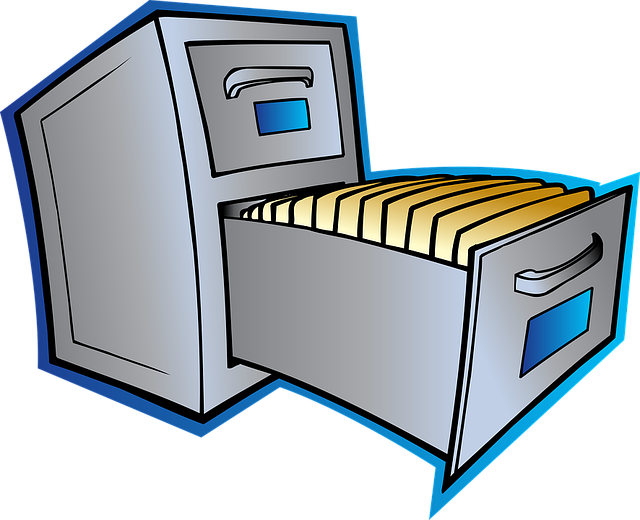CAS News
Opening New Doors after a Life-Changing Event
 Jill Ciccarelli Rapps | éBella Magazine | July 2016
Jill Ciccarelli Rapps | éBella Magazine | July 2016
Today’s women are strong, independent people who contribute a tremendous amount to society and to the lives of people with whom they come in contact.
However, we all face challenging times. One of the biggest challenges can come when you enter a period of major transition.
What is a Transitional Period?
Transitional periods for women can include a wide range of situations:
- Death of a loved one
- Diagnosis of illness or serious injury
- Divorce
- Move
- Caring for aging parents
- Lost job
- Other stressful life events
Obviously, positive transitional periods – such as a marriage or a promotion – can have a major impact on your life as well, but it’s not often that these periods are hard or stressful to navigate. However, in the situations listed above, the world can seem to be against you and transitioning through these stages of your life can be difficult.
Tips to Remember
Several strategies can help you work through transitional periods. If you keep these strategies in mind, you will likely find it easier to navigate difficult, overwhelming situations in the best possible way.
 Start by setting goals for yourself to achieve by the end of the transitional period, and perhaps even goals to reach along the way. The goals can be small or major, but should always be realistic. Goals give you something to strive for and help you maintain a positive focus – instead of dwelling on the negatives in your situation.
Start by setting goals for yourself to achieve by the end of the transitional period, and perhaps even goals to reach along the way. The goals can be small or major, but should always be realistic. Goals give you something to strive for and help you maintain a positive focus – instead of dwelling on the negatives in your situation.
Understand that your emotions are normal, and that you shouldn’t feel bad or blame yourself for feeling a certain way. No matter the situation, you could experience emotions like anger, sadness, regret, and more. It’s important to remember that these emotions are felt by many people who are going through similar circumstances.
Pay attention to your finances. This is incredibly important, as your finances are easy to overlook when the emotions of a situation are taking over your life. Taking steps to protect your finances is a must. Depending on your situation, talking to a financial expert could be necessary. Your advisor will guide you step-by-step to ensure that your finances do not seem overwhelming, and to help you capitalize on opportunities you may not have foreseen.
Stay busy. Consider taking up a new hobby or reconnecting with an old hobby. Adopting a new pet may be beneficial. Focus on activities with a loved one. The key is to stay busy and have a purpose, so you don’t become bogged down and distracted by situations that you cannot change.
Try to focus on the positive. Even the worst events in our lives may have some positive aspects. Here’s a good exercise to do regularly: every time you have a thought that makes you feel bad, counteract it with a thought that makes you feel good. Each day, consider what you are grateful for in your life, unrelated to the issue with which you are coping. Just like exercising on a regular basis, this brain exercise will help to create positive emotions over time.
Set up support. Whether it’s an advisor, a counselor, or a group of old friends, having someone you can talk to and confide in will positively impact your ability to move through the transitional period and into a better state of mind.
Consider making incremental changes. Learning something new, for example, is a great way to redirect your energy and attention after the death of a loved one. Helping others can help you find purpose again. Little changes to your life can make a big difference over time.
There’s no question that it can be overwhelming to move through challenging situations on your own. Fortunately, our Ciccarelli Advisory Services family is always here to support you through times of transition.
Rochester Family Fun Night 2016
A crowd of 557 CAS family members convened at Frontier Field on August 19 for our annual client appreciation event. We enjoyed a picnic dinner and watched the Rochester Redwings defeat the Buffalo Bison 4 to 2. After the game, we witnessed a spectacular fireworks display.
Thank you to everyone who attended our family fun night – we cherish our relationship with you, and we are so grateful for the opportunity to guide your family towards financial wellness!

New Social Security Protections

The Social Security Administration has tightened security in order to prevent hackers and identity thieves. Now, when you log into your Social Security Administration account, you do what you’ve always done: type in your user name and password. Then, you receive a security code sent by text message, and enter that code to complete your login procedure.
In the cybersecurity trade, this is known as multifactor authentication.
The result is better security for people receiving Social Security benefits, but the new protections can cause a big hassle for some users. On the first day, Verizon customers weren’t getting their security codes; the problem has since been fixed. Many older Americans don’t text on their phones, creating an obstacle for those who have not yet embraced this technology. At the same time, multifactor authentication doesn’t prevent cyber criminals from fraudulently creating an online account in your name and siphoning away your benefits.
How should you respond to the new Social Security protections?
- If you don’t already have an account with the Social Security Administration, now would be a good time to create one – before an identity thief decides to do it for you. Visit this link to set up your Social Security account: https://secure.ssa.gov/RIL/SiView.do
- If you aren’t into texting, now would be a good time to get familiar with that feature of your smart phone. If you’re having trouble, ask your grandchild or a younger family member for some quick tech support.
Don’t roll the dice on your social security!

Source: http://time.com/money/4434100/social-security-website-two-factor-authentication/?xid=tcoshare
Bridging Your Passion and Purpose with Your Money
 Jill Ciccarelli Rapps | Life in Naples Magazine | August • September • October 2016
Jill Ciccarelli Rapps | Life in Naples Magazine | August • September • October 2016
Many factors can influence your overall level of contentment and happiness. For some people, financial success is of utmost importance; for others, doing what you love is more significant. However, bridging your passion and purpose with your money can lead you to even greater happiness.
Building the Bridge
While uniting your passion and purpose with your finances is a challenge, establishing this connection can have a profoundly positive impact on your life. Understanding these five key concepts will guide you down the path to self-fulfillment.
Realize that you are more than your possessions. It’s easy to get sidetracked by only considering the ‘stuff’ you have. Instead of thinking about your life in terms of money (i.e. “I need to earn this amount so I can buy this item”), try to step back and look at the bigger picture: What’s really important to you? There’s nothing wrong with buying that big-ticket item, but make an effort to focus your energy on your passion and purpose.
Identify your true passion and purpose. Your life purpose is your highest calling or deepest aspiration. For some people, your purpose is providing for your family, and helping them to achieve health, happiness and success. For others, you may feel called to contribute your time and talents to charities or other causes that positively impact your community. Your passion can be anything that you love to do. Perhaps you are passionate about creating things, or maybe you love experiencing the world through travel. Once you’ve identified your purpose in life and realize your passion, it’s easier to bridge your inner being with your finances – and you can begin to move towards an improved mental state.

Consider investing in a project that fulfills your passion and purpose. Now that you’ve identified your passion and purpose, brainstorm ways to utilize your finances to pursue these positive forces in your life. By financially supporting your passion and purpose, your inner being will develop a more prominent, concrete presence in your everyday life. Contemplate these two examples. If you are passionate about travel and helping the less fortunate is one of your purposes in life, you could engage in volunteer work while vacationing in Latin America. If music is your passion and you feel called to dedicate your time and talents to educating young people, you could invest in musical instruments and offer free lessons to children.
Pursue your passion as a source of income. In many situations, you can make a comfortable living by engaging in your passion. You might not earn as much as you could in other professions, but it is possible to make money from virtually anything – from farming to music to travel and beyond. If you are able to form valuable connections, you may find you can take your passion to a higher level. At that point, you could earn a considerable amount of money doing what you love.
Capitalize on online resources. The Internet provides you a wealth of tools and resources you can leverage. Consider using social media to interact with others who share your passion and purpose, or even set up a blog to generate interest and awareness for your endeavors.
Your passion and purpose will serve as the driving forces throughout your life. Bridging these positive forces with your money can be instrumental in leading you towards happiness and self-fulfillment. The above tips are vital for anyone who aspires to create a better future for yourself and your family.
Mastering your finances is a crucial step in your journey towards self-fulfillment. The Ciccarelli Advisory Services family of advisors can help achieve your goals and desires.
Organize Your Financial Life
 An important part of managing your personal finances is keeping your financial records organized. Whether it’s a utility bill to show proof of residency or a Social Security card for wage reporting purposes, there may be times when you need to locate a financial record or document–and you’ll need to locate it relatively quickly.
An important part of managing your personal finances is keeping your financial records organized. Whether it’s a utility bill to show proof of residency or a Social Security card for wage reporting purposes, there may be times when you need to locate a financial record or document–and you’ll need to locate it relatively quickly.
By taking the time to clear out and organize your financial records, you’ll be able to find what you need exactly when you need it.
What should you keep?
If you tend to keep stuff because you “might need it someday,” your desk or home office is probably overflowing with nonessential documents. One of the first steps in determining what records to keep is to ask yourself, “Why do I need to keep this?”
Documents you should keep are likely to be those that are difficult to obtain, such as:
• Tax returns
• Legal contracts
• Insurance claims
• Proof of identity
On the other hand, if you have documents and records that are easily duplicated elsewhere, such as online banking and credit card statements, you probably do not need to keep paper copies of the same information.
How long should you keep your records?
Generally, a good rule of thumb is to keep financial records and documents only as long as necessary. For example, you may want to keep ATM and credit card receipts only temporarily, until you’ve reconciled them with your bank and/or credit card statement.
On the other hand, if a document is legal in nature and/or difficult to replace, you’ll want to keep it for a longer period or even indefinitely.
Some financial records may have more specific timetables. For example, the IRS generally recommends that taxpayers keep federal tax returns and supporting documents for a minimum of three years up to seven years after the date of filing. Certain circumstances may even warrant keeping your tax records indefinitely.
Listed below are some recommendations on how long to keep specific documents:
Records to keep for one year or less
• Bank or credit union statements
• Credit-card statements
• Utility bills
• Auto and homeowners Insurance policies
Records to keep for more than a year
• Tax returns and supporting documentation
• Mortgage contracts
• Property appraisals
• Annual retirement and investment statements
• Receipts for major purchases and home improvements
Records to keep indefinitely
• Birth, death, and marriage certificates
• Adoption records
• Citizenship and military discharge papers
• Social Security card
Keep in mind that the above recommendations are general guidelines, and your personal circumstances may warrant keeping these documents for shorter or longer periods of time.
Out with the old, in with the new
An easy way to prevent paperwork from piling up is to remember the phrase “out with the old, in with the new.” For example, when you receive this year’s auto insurance policy, discard the one from last year. When you receive your annual investment statement, discard the monthly or quarterly statements you’ve been keeping. In addition, review your files at least once a year to keep your filing system on the right track.
Finally, when you are ready to get rid of certain records and documents, don’t just throw them in the garbage. To protect sensitive information, you should invest in a good quality shredder to destroy your documents, especially if they contain Social Security numbers, account numbers, or other personal information.
Where should you keep your records?
You could go the traditional route and use a simple set of labeled folders in a file drawer. More important documents should be kept in a fire-resistant file cabinet, safe, or safe-deposit box.
If space is tight and you need to reduce clutter, you might consider electronic storage for some of your financial records. You can save copies of online documents or scan documents and convert them to electronic form. You’ll want to keep backup copies on a portable storage device or hard drive and make sure that your computer files are secure.
You could also use a cloud storage service that encrypts your uploaded information and stores it remotely. If you use cloud storage, make sure to use a reliable company that has a good reputation and offers automatic backup and technical support.
Once you’ve found a place to keep your records, it may be helpful to organize and store them according to specific categories (e.g., banking, insurance, proof of identity), which will make it even easier to access what you might need.
Consider creating a personal document locator
Another option for organizing your financial records is to create a personal document locator, which is simply a detailed list of where you have stored your financial records. This list can be helpful whenever you are trying to locate a specific document and can also assist your loved ones in locating your financial records in the event of an emergency.
Typically, a personal document locator will include the following information:
• Personal information
• Personal contacts (e.g., attorney, tax preparer, financial advisor)
• Online accounts with username and passwords
• List of specific locations of important documents (e.g., home, office, safe)
Broadridge Investor Communication Solutions, Inc. does not provide investment, tax, or legal advice. The information presented here is not specific to any individual’s personal circumstances. To the extent that this material concerns tax matters, it is not intended or written to be used, and cannot be used, by a taxpayer for the purpose of avoiding penalties that may be imposed by law. Each taxpayer should seek independent advice from a tax professional based on his or her individual circumstances. These materials are provided for general information and educational purposes based upon publicly available information from sources believed to be reliable—we cannot assure the accuracy or completeness of these materials. The information in these materials may change at any time and without notice.
Should I Buy Gold and Silver?

Just as with other investments, there are pros and cons to investing in gold and silver. Some of the positives are that it serves as a useful hedge against inflation, as well as a safety tool during market uncertainty and political upheaval. But most importantly, it may serve as a good diversifier to other asset classes. Some of the negatives include the volatility that comes from short-term market speculation.
The last two points, market speculation and volatility, are of particular interest. It’s hard to miss news about how well gold and silver have done so far this year as compared to the S&P 500, which is used as a proxy to the overall market. However, viewing these numbers in isolation or in a short-term time frame is like looking at a work of art from only a few inches away. In order to see the true picture, you have to step back to appreciate it. The same is true when looking at investment returns.
So, if we expand our time frame from over a decade or more, history shows us high growth and extreme volatility relative to the market. We now start to see a very different picture: one where the market outperforms by multiples, while gold and silver remain flat.*
At Ciccarelli Advisory Services, we believe in creating a fully diversified portfolio. What does that mean? Well, it means investing in a diverse group of asset classes over the long term. The asset classes have a low level of correlation between each other, allowing some investments to do well when others are not.
In the case of gold, silver, and other precious metals, adding this asset class as part of a fully diversified portfolio may make sense based on the financial plan that you and your financial advisor have designed.
Fortunately, the proliferation of investment products have made it easier to invest in gold and silver, which were once considered esoteric asset classes. For the regular investor, this can be done through ETF’s or ETN’s (Exchange Traded Funds or Notes), as well as through mutual funds, managed accounts, stocks of mining companies, futures contracts, and in the physical form of coins and bars.
In conclusion, gold and silver can be a good investment, but it has to be done for the right reasons – as part of a fully diversified portfolio over the long term.
*The Morningstar Gold & Silver Commodity ER USD benchmarks represent the excess return performance of a fully collateralized position in gold futures where futures contracts are rolled monthly to the nearest contract at least 2 months out. The index is multi-factor weighted and is rebalanced annually.
Comparing 529 Plans to Other College Savings Options

Section 529 plans can be a great way to save for college – in many cases, the best way – but they’re not the only way. When you’re investing for a major goal like education, it makes sense to be familiar with all of your options.
U.S. savings bonds
U.S. savings bonds are backed by the full faith and credit of the federal government. They’re very easy to purchase, and available in face values as low as $50 ($25 if purchased electronically). Two types of savings bonds, Series EE (which may also be called Patriot bonds) and Series I bonds, are popular college savings vehicles.
Not only is the interest earned on them exempt from state and local tax at the time you redeem (cash in) the bonds, but you may be able to exclude at least some of the interest from federal income tax if you meet the following conditions:
Your modified adjusted gross income (MAGI) must be below $92,550 if you’re filing single and $146,300 if you’re married filing jointly in 2016
- The bond proceeds must be used to pay for qualified education expenses
- The bonds must have been issued in 1990 or later
- The bonds must be in the name of one or both parents, not in the child’s name
- Married taxpayers must file a joint return
- The bonds must have been purchased by someone at least 24 years old
- The bonds must be redeemed the same year that qualified education expenses are being paid
But a 529 plan, which includes both college savings plans and prepaid tuition plans, may be a more attractive way to save for college. A college savings plan invests primarily in stocks through one or more pre-established investment portfolios that you generally choose upon joining the plan. So, a college savings plan has a greater return potential than U.S. savings bonds, because stocks have historically averaged greater returns than bonds (though past performance is no guarantee of future results).
However, there is a greater risk of loss of principal with a college savings plan. Your rate of return is not guaranteed–you could even lose some of your original contributions. By contrast, a prepaid tuition plan generally guarantees you an annual rate of return in the same range as U.S. savings bonds (or maybe higher, depending on the rate of college inflation).
Perhaps the best advantage of 529 plans is the federal income tax treatment of withdrawals used to pay qualified education expenses. These withdrawals are completely free from federal income tax no matter what your income, and some states also provide state income tax benefits. The income tax exclusion for Series EE and Series I savings bonds is gradually phased out for couples who file a joint return and have a MAGI between $116,300 and $146,300. The same happens for single taxpayers with a MAGI between $77,550 and $92,550. These income limits are for 2016 and are indexed for inflation every year.
However, keep in mind that if you don’t use the money in your 529 account for qualified education expenses, you will owe a 10% federal penalty tax on the earnings portion of the funds you’ve withdrawn. And as the account owner, you may owe federal (and in some cases state) income taxes on the earnings portion of your withdrawal, as well. Plus, there are typically fees and expenses associated with 529 plans. College savings plans may charge an annual maintenance fee, an administrative fee, and an investment fee based on a percentage of total account assets, while prepaid tuition plans typically charge an enrollment fee and various administrative fees.
Mutual funds
At one time, mutual funds were more widely used for college savings than 529 plans. Mutual funds do not impose any restrictions or penalties if you need to sell your shares before your child is ready for college. However, if you withdraw assets from a 529 plan and use the money for non-educational expenses, the earnings part of the withdrawal will be taxed and penalized.
Also, mutual funds let you keep much more control over your investment decisions because you can choose from a wide range of funds, and you’re typically free to move money among a company’s funds, or from one family of funds to another, as you see fit. By contrast, you can’t choose your investments with a prepaid tuition plan, though you are generally guaranteed a certain rate of return or that a certain amount of tuition expenses will be covered in the future. And with a college savings plan, you may be able to choose your investment portfolio at the time you join the plan, but your ability to make subsequent investment changes is limited.
Some plans may let you direct future contributions to a new investment portfolio, but it may be more difficult to redirect your existing contributions. However, states have the discretion to allow you to change the investment option for your existing contributions twice per calendar year or when you change the beneficiary. Check the rules of your plan for more details.
In the area of taxes, 529 plans trump mutual funds. The federal income tax treatment of 529 plans is a real benefit. You don’t pay federal income taxes each year on the earnings within the 529 plan. And any withdrawals that you use to pay qualified higher education expenses will not be taxed on your federal income tax return. (But if you withdraw money for non-educational expenses, you’ll owe income taxes on the earnings portion of the withdrawal, as well as a 10% federal penalty.)
Tax-sheltered growth and tax-free withdrawals can be compelling reasons to invest in a 529 plan. In many cases, these tax features will outweigh the benefits of mutual funds. This is especially true when you consider how far taxes can cut into your mutual fund returns. You’ll pay income tax every year on the income earned by your fund, even if that income is reinvested. And when you sell your shares, you’ll pay capital gains tax on any gain in the value of your fund.
Traditional and Roth IRAs
Traditional IRAs and Roth IRAs are retirement savings vehicles. However, because withdrawals for qualified higher education expenses are exempt from the 10% premature distribution tax (also called the early withdrawal penalty) that generally applies to withdrawals made before age 59½, some parents may decide to save for college within their IRAs.
In order to be exempt from the premature distribution tax, any money you withdraw from your IRA must be used to pay the qualified higher education expenses of you or your spouse, or the children or grandchildren of you or your spouse. However, even if you’re exempt from the 10% premature distribution tax, some or all of the IRA money you withdraw may still be subject to ordinary federal (and possibly) state income tax.
Also, any withdrawals for college expenses will reduce your retirement nest egg, so you may want to think carefully before tapping your retirement funds.
Custodial accounts
A custodial account holds assets in your child’s name. A custodian (this can be you or someone else) manages the account and invests the money for your child until he or she is no longer a minor (18 or 21 in most states). At that point, the account terminates and your child has complete control over the funds. Many college-age children can handle this responsibility, but there’s still a risk that your child might not use the money for college. But you don’t have to worry about this with a 529 plan because you, as the account owner, decide when to withdraw the funds and for what purpose.
A custodial account is not a tax-deferred account. The investment earnings on the account will be taxed to your child each year. Under special rules commonly referred to as the “kiddie tax” rules, children are generally taxed at their parent’s (presumably higher) tax rate on any unearned income over a certain amount. In 2016, this amount is $2,100 (the first $1,050 is tax free and the next $1,050 is taxed at the child’s rate).
The kiddie tax rules apply to: (1) those under age 18, (2) those age 18 whose earned income doesn’t exceed one-half of their support, and (3) those ages 19 to 23 who are full-time students and whose earned income doesn’t exceed one-half of their support. The kiddie tax rules significantly reduce the tax savings potential of custodial accounts as a college savings strategy. Remember that earnings from a 529 plan will escape federal income tax altogether if used for qualified higher education expenses; the state where you live may also exempt the earnings from state tax.
But a custodial account might appeal to you for some of the same reasons as regular mutual funds. Though the funds must be used for your child’s benefit, custodial accounts don’t impose penalties or restrictions on using the funds for non-educational expenses. Also, your investment choices are virtually unlimited (e.g., stocks, mutual funds, real estate), allowing you to be as aggressive or conservative as you wish. As discussed, 529 plans don’t offer this degree of flexibility.
Note: Custodial accounts are established under either the Uniform Transfers to Minors Act (UTMA) or the Uniform Gifts to Minors Act (UGMA). The two are similar in most ways, though an UTMA account can stay open longer and can hold certain assets that an UGMA account can’t.
Finally, there is the issue of fees and expenses. Depending on the financial institution, you may not have to pay a fee to open or maintain a custodial account. But generally you can count on incurring at least some type of fee with a 529 plan. College savings plans may charge an annual maintenance fee, an administrative fee, and an investment fee based on a percentage of total account assets, while prepaid tuition plans typically charge an enrollment fee and various administrative fees.
Trusts
Though trusts can be relatively expensive to establish, there are two types you may want to investigate further.
Irrevocable trusts: You can set up an irrevocable trust to hold assets for your child’s future education. This type of trust lets you exercise control over the assets through the trust agreement. However, trusts can be costly and complicated to set up, and any income retained in the trust is taxed to the trust itself at a potentially high rate. Also, transferring assets to the trust may have negative gift tax consequences. A 529 plan avoids these drawbacks but still gives you some control.
2503 trusts: There are two types of trusts that can be established under Section 2503 of the Tax Code: the 2503c “minor’s trust” and the 2503b “income trust.” The specific features and tax consequences vary depending on the type of trust that is used, and the details are beyond the scope of this discussion. Suffice it to say that either type of trust is much more costly and complicated to establish and maintain than a 529 plan. In most cases, a 529 plan is a better way to save for college.
Note: Investors should consider the investment objectives, risks, charges, and expenses associated with 529 plans before investing. More information about specific 529 plans is available in the issuer’s official statement, which should be read carefully before investing. Also, before investing, consider whether your state offers a 529 plan that provides residents with favorable state tax benefits. As with other investments, there are generally fees and expenses associated with participation in a 529 savings plan. There is also the risk that the investments may lose money or not perform well enough to cover college costs as anticipated.
This message may contain confidential information and is intended for use only by the addressee(s) named on this transmission. Broadridge Investor Communication Solutions, Inc. does not provide investment, tax, or legal advice. The information presented here is not specific to any individual’s personal circumstances. To the extent that this material concerns tax matters, it is not intended or written to be used, and cannot be used, by a taxpayer for the purpose of avoiding penalties that may be imposed by law. Each taxpayer should seek independent advice from a tax professional based on his or her individual circumstances. These materials are provided for general information and educational purposes based upon publicly available information from sources believed to be reliable—we cannot assure the accuracy or completeness of these materials. The information in these materials may change at any time and without notice.
Your Guide to Mutual Fund Share Classes

When investing in a mutual fund, you may have the opportunity to choose among several share classes, most commonly Class A, Class B, and Class C. The differences among these share classes typically evolve around how much you will be charged for buying the fund, when you will pay any sales charges that apply, and the amount you will pay in annual fees and expenses.
This multi-class structure offers you the opportunity to select a share class that is best suited to your investment goals.
Costs Associated with Mutual Funds
Mutual funds have costs that are passed on to investors. It’s important for you to understand what the different costs are, since these are usually deducted from the money you’ve invested and can affect the return of your investment over time.
Typically, mutual fund costs consist of sales charges and annual expenses. The sales charge, often called a load, is the broker’s commission, deducted from your investment when you buy the fund, or when you sell it. The annual expenses cover the fund’s operating costs, including management fees, distribution and service fees (commonly known as 12b-1 fees), and general administrative expenses. They are generally computed as a percentage of your assets and then deducted from the fund before the fund’s returns are calculated.
Note: Before investing in a mutual fund, carefully consider its investment objectives, risks, fees, and expenses, which can be found in the prospectus available from the fund. Read it carefully before investing.
So which share class should you choose? The answer to that depends on two factors: how much you want to invest and your investment time horizon.
Class A Shares
Class A shares may appeal to you if you’re considering a long-term investment of a large number of shares. When you purchase Class A shares, a sales charge, called a front-end load, is typically deducted upfront, thus reducing the actual amount of your initial investment.
For example, suppose you decide to spend $35,000 on Class A shares with a hypothetical front-end sales load of 5 percent. You will be charged $1,750 on your purchase, and the remaining $33,250 will be invested.
However, Class A shares offer you discounts, called breakpoints, on the front-end load if you buy shares in excess of a certain dollar amount. Typically, a fund will offer several breakpoints, so the more you invest, the greater the reduction in the sales load.
For example, let’s say that a mutual fund charges a load of 5 percent if you invest less than $50,000, but reduces that load to 4.5 percent if you invest at least $50,000 but less than $100,000. This means that if you invest $49,000, you’ll pay $2,450 in sales charges, but if you invest $50,000 (i.e., you reach the first breakpoint), you’ll pay only $2,250 in sales charges.
You may also qualify for breakpoint discounts by signing a letter of intent and agreeing to purchase additional shares within a certain period of time (generally 13 months), or by combining your current purchase with other investment holdings that you or your spouse and children have within the same fund or family of funds (called a right of accumulation). Since rules vary, read your fund’s prospectus to find out how you may qualify for available breakpoint discounts, or contact your investment advisor for more information.
Class A 12b-1 fees tend to be lower than those of other share classes, thus reducing your overall costs. This may make Class A shares more attractive to you if you wish to hold on to the fund for a longer period of time.
Class B Shares
Class B shares may appeal to you if you wish to invest a smaller amount of money for a long period of time. Unlike Class A shares, there is no up-front sales charge, so all of your initial investment is put to work immediately.
Class B shares have a back-end load, often called a contingent deferred sales charge (CDSC) that you pay when you sell your shares. The load usually decreases over time (typically 6 to 8 years), although this varies from fund to fund. By the end of the time period no charge applies. At that stage your shares may convert to Class A shares.
For example, suppose you invest $5,000 in Class B shares, with a 5 percent CDSC that decreases by 1 percent every year after the second year. If you sell your shares within the first year, you will pay 5 percent of the value of your assets or the value of the initial investment, whichever is less. If you hold your shares for 6 years, the CDSC will be reduced to zero.
Before you purchase Class B shares, however, make sure that this investment fits in with your overall goals. Class B 12b-1 fees can be considerably higher than for Class A shares, so the cost of investing large amounts over time might be more than you would like.
In addition, you don’t benefit from the breakpoint discounts available with Class A shares, and you must pay the CDSC if you sell your Class B shares within the time limit. You should also keep track of when your shares convert to Class A shares, especially if your account has been transferred from one brokerage to another.

Class C Shares
When you purchase Class C shares, a front-end load is normally not imposed, and the CDSC is generally lower than for Class B shares. This charge is reduced to zero if you hold the shares beyond the CDSC period, which for Class C shares is typically 12 months. For those reasons Class C shares may be appropriate if you have a large amount to invest and you intend to keep the fund for less than 5 years.
However, like Class B shares, the 12b-1 fees are greater for Class C shares than for Class A shares. Unlike Class B shares, these expenses will not decrease during the life of the investment, because C Class shares generally don’t convert to Class A shares. In addition, there are no breakpoints available for large purchases.
Other Options
Some mutual funds may not offer all three share classes and others may offer different classes, such as hybrid load shares or mid-load shares. Another option you may consider is a no-load mutual fund that you can purchase directly from an investment company or through an investment advisor. As the name implies, these funds have no front-end or back-end loads, and their expenses are typically lower than for other share classes.
Before you decide if these shares are suitable for you, you should look at their past performance and also at any expenses that may apply.
- Check out the mutual fund in advance. Read the prospectus carefully, especially the discussion of fund classes and fees and how they apply to you.
- Make sure you understand how breakpoints work and how to take advantage of them.
- Compare the fees and expenses of different fund classes, to see how purchasing different share classes can affect your return. Take into account your investment amount, the length of time you plan to hold the fund, and the expenses and share load per share class.
- Review your mutual fund holdings regularly. Keep yourself informed of possible upcoming deadlines, such as an impending breakpoint, or when any Class B shares you may own are scheduled to convert to Class A shares.
- Keep your broker informed. To take advantage of all breakpoint discounts, you need to tell your broker about (a) your holdings within the mutual fund, and those of your family, (b) your holdings at other brokers, (c) any additional purchases you may have in mind.
As you consider how best to invest in mutual funds, keep in mind that there’s no guarantee any mutual fund will achieve its investment objective. You should discuss all of your investment goals with a qualified financial professional.
Broadridge Investor Communication Solutions, Inc. does not provide investment, tax, or legal advice. The information presented here is not specific to any individual’s personal circumstances. To the extent that this material concerns tax matters, it is not intended or written to be used, and cannot be used, by a taxpayer for the purpose of avoiding penalties that may be imposed by law. Each taxpayer should seek independent advice from a tax professional based on his or her individual circumstances. These materials are provided for general information and educational purposes based upon publicly available information from sources believed to be reliable—we cannot assure the accuracy or completeness of these materials. The information in these materials may change at any time and without notice.
Kay Anderson Completes Estate Planning Module

We are proud to announce that Kay Anderson has reached a key milestone as she works towards earning her CERTIFIED FINANCIAL PLANNER™ certification.
By completing the estate planning module, Kay has developed a strong understanding of the estate and gift tax system, including strategies for developing personal estate plans.
“In addition to her 10 years of hands-on experience at CAS, Kay’s alignment with the CFP® program enriches her understanding and delivery of services for the families we serve,” said Kim Ciccarelli Kantor, President of Ciccarelli Advisory Services. “We are very pleased with her continued passion for learning.”
The CFP® designation, offered through the American College, is widely regarded as one of the most prestigious financial educational programs. Kay’s dedication to continuing her education exemplifies our passion for providing families with knowledgeable advice and financial planning expertise.
Prior to completing the estate planning course, Kay mastered several other topics that are essential to wealth management: the financial planning process and environment, insurance planning, income taxation, planning for retirement needs, and investments.
This fall, Kay will begin her capstone course: the case analysis. She will create a comprehensive financial report, and present the material as if she were meeting with a client.
After she completes the case analysis, Kay will be eligible to take the CFP® exam – the final step in attaining the designation. The six-hour exam covers the core concepts from all previous modules, with an emphasis on applying critical thinking skills and financial planning knowledge to real-life scenarios.
At Ciccarelli Advisory Services, we focus on what matters to your family because we are a family. We embrace a holistic approach to wealth management and financial planning. Our family of advisors and staff is dedicated to promoting the financial well-being of your family – today and for generations to come.
CAS Profiles – Neri Ciccarelli (Florida)

Neri joined the CAS team in September 1996 as a Client Services Associate for Paul Ciccarelli. In addition to providing top-notch service to Paul’s clients, she is in charge of representative licensing.
She also makes certain that our staff is well-nourished. Neri can often be found ordering lunch for the members of our CAS family.
“Our staff members are like part of our family and teach us all new lessons every day,” Neri said.
Originally from San Juan, Puerto Rico, Neri grew up in New York City and currently lives in Naples. Prior to joining CAS, she worked as a paralegal and continues to have a passion for law.
Neri has been married to Paul Ciccarelli for 16 years. She has two stepsons: Noah, who is a sous chef at Sea Salt Restaurant; and Jonah, who is an assistant client representative at Cloud9 Float and Spa.
Neri is involved in our Naples community, serving as secretary of the Greater Naples YMCA Endowment Board. She enjoys spending time with her friends, family and in-laws; experimenting with new ideas in the kitchen; experiencing the wide variety of restaurants in our Naples area; and listening to jazz.
Neri added that she “loves to live life simple and making everyone feel good.”



![Frontier_From_1st_Lower_V2T[1]](http://ciccarelliadvisory.com/newswp/wp-content/uploads/2016/08/Frontier_From_1st_Lower_V2T1.jpg)


